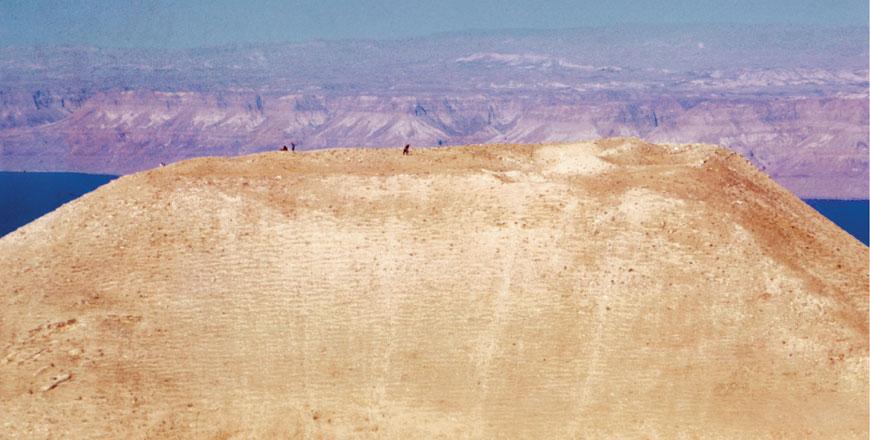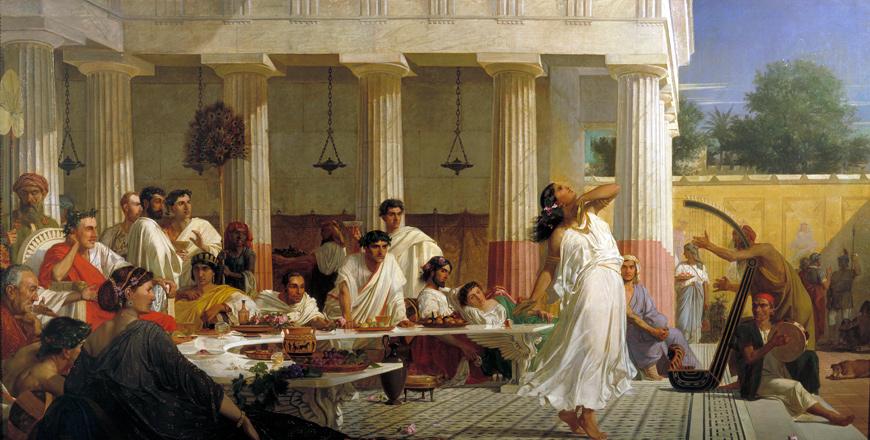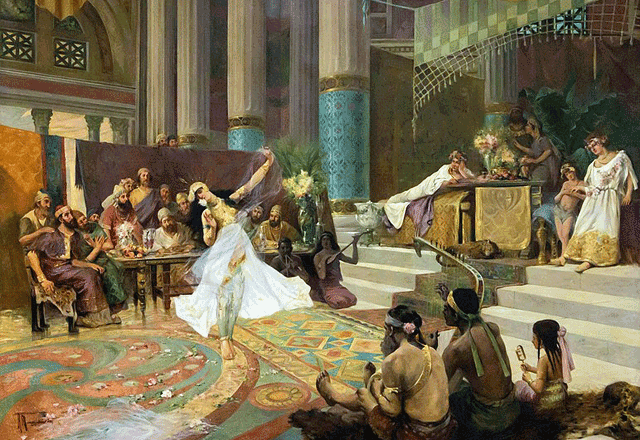You are here
Lost biblical fortress of Machaerus restored after 50 years of excavations
By Saeb Rawashdeh - Mar 14,2019 - Last updated at Mar 14,2019

In this undated photo, the hilltop of Machaerus can be seen. The site used to serve as a fortress protecting Jerusalem, according to a Hungarian archaeologist (Photo courtesy of Gyozo Voros)
AMMAN — Prior to 1968, the hilltop of Machaerus, overlooking the Dead Sea near Mount Nebo was an untouched “virgin” site, according to Hungarian archaeologist Gyozo Voros.
Speaking at the “Book Launch and Public Lecture Machaerus III” event at American Centre of Oriental Research on Wednesday, Voros said that 50 years of excavation had finally uncovered a mountain of evidence on one of the most important sites in the region.
Machaerus is a strategic citadel-fortress protecting Jerusalem on the eastern side of the River Jordan, said Voros.
The archaeologist, who is a member of the Hungarian Academy of Arts, has been directing excavations in the Middle East for 25 years now.
With this discovery, Voros said that Machaerus, once lost for more than 1,735 years, has become a historical reality.
The great magnificent biblical site sits over an area of approximately 5,000 square metres, he added.
Accumulated wall-debris above the Herodian floor level is estimated at two metres in height, continued Voros, saying that excavations revealed 10,000 cubic metres of debris.
Evidence pointing to the existence of the citadel-fortress existed long before our discovery, the professor said.
Hence, the team of researchers have been studying previously unknown Machaerus archaeological materials in several storerooms, including Amman, Madaba, Mount Nebo, Jerusalem and Starkville, Mississippi, in the US, he underlined.
Then, the experts began excavating to establish the chronology of the monument’s different phases and the stratigraphy of its archaeological layers, according to Voros.
Works were aimed at reconstructing the Machaerus citadel in light of Hasmonean and Herodian architecture in the West Bank, and the archaeological evidence from first century written sources.
The Hasmoneans and Herodians were dynasties that ruled the Judean and Edomite kingdoms in the west and east banks of the Jordan River, respectively, around the first and second centuries BCE through the era of Roman conquest in today’s Palestine and Jordan.
Combined, the information gathered allows researchers to execute possible anastyloses [a reconstruction technique] of the original building, Voros explained.
Afterwards, the team continued with the conservation, consolidation and preservation process of the monument, with a sustainable site management programme, engaging the local community, the professor outlined.
“However, the definitive goal of our scientific project is to leave Machaerus for the next generations as an authentic and reliable historical and archaeological place, but most importantly, as a Christian pilgrim site”, Voros highlighted.
The idea of the scholars was “to situate the archaeological site in its New Testament context, and reconstruct it as clearly as possible in the light of 21st century historical, architectural and archaeological research”.
Josephus (a Philo-Roman Jewish historian 37 AD-100 AD) described Machaerus in detail, while the citadel was first identified by German explorer Ulrich Jasper Seetzen in 1807 and the lower city by the French-Dominican Father Felix-Marie Abel in 1909, Voros said.
“We should not forget though that Christian pilgrimages to the Holy Land had only been initiated by the time of the Roman Emperor Constantine the Great, and by that time, Machaerus was already a deserted [two-and-a-half-century-old] place,” he noted.
“It became a destination for the pilgrims only after its 19th century rediscovery, and the archaeological excavations started in 1968,’’ the Hungarian archaeologist underlined.
Furthermore, the Machaerus I-II-III volumes of research consist of 1,548 published pages on the archaeological site, which rendered it one of the best known and published archaeological sites in Jordan, Voros added.
They are even sold at the Mount Nebo bookshop.
The Sword and John the Baptist
Machaerus (meaning sword in Greek) was built by Hasmonean Alexander Jannaeus in ca. 90 BC, and it was destroyed by Gabinius in 57 BC, the scholar explained.
The fortress was transformed into a royal palace and city by King Herod the Great in ca. 30 BC, but Nabataean king Aretas IV destroyed Machaerus in 36 AD, he said.
“From its hilltop location to the east of the Dead Sea, Machaerus could provide a view all the way to Jerusalem, Masada, Jericho and even to Alexandreion,” Voros said.
Pliny the Elder (23AD - 79 AD) acknowledged that “Machaerus, next to Jerusalem, was once one of the most strongly fortified places in Judea”, uniquely located to overlook the Dead Sea and the West Bank, the scholar emphasised.
“Historical events at the fortress are narrated by Josephus. The account given by him that Herod Antipas had John the Baptist imprisoned and executed at the fortress is complementing the descriptions of the Gospels of Mark and Matthew, and it was also confirmed by Eusebius”, Voros highlighted.
Putting together the information from Josephus and the Gospels, it can be identified that Machaerus is the historical scene of the tragic birthday banquet of Tetrarch Herod Antipas, and the place where Princess Salome danced and Saint John the Baptist was beheaded, he said.
Machaerus was the only royal palace that Antipas inherited from King Herod and was a symbol of his Herodian legacy and the perfect place for his birthday party, Voros said.
“However, after a short period of reoccupation by the Judean rebels [66-71 AD], the fortress was destroyed by the Romans in 71 or 72,” he followed.
Excavations for the Herodian citadel started 50 years ago, by American-Baptists, followed by Italian-Franciscans.
Work is complete now, after 11 years of excavation collaboration between the Franciscans and the Hungarians, Voros said.
But the job is not done yet, he warned.
The next step is to conserve, preserve and consolidate the restored citadel.
“We are continuing our restoration project in April 2019 to preserve this important historical and religious site for the next generations of pilgrims and visitors,” the scholar concluded.
Related Articles
AMMAN — For decades, scholars have linked the biblical tradition about the beheading of John the Baptist with the material evidence found at
MUKAWIR — Pilgrims and visitors to the 2,000-year-old Citadel of Machaerus will be able to authentically envision the point in history when
AMMAN — Isolated in the middle of a rocky mountain plateau that dominates the Dead Sea lie the ruins of the Herodian fortress Macaereus, whe



















